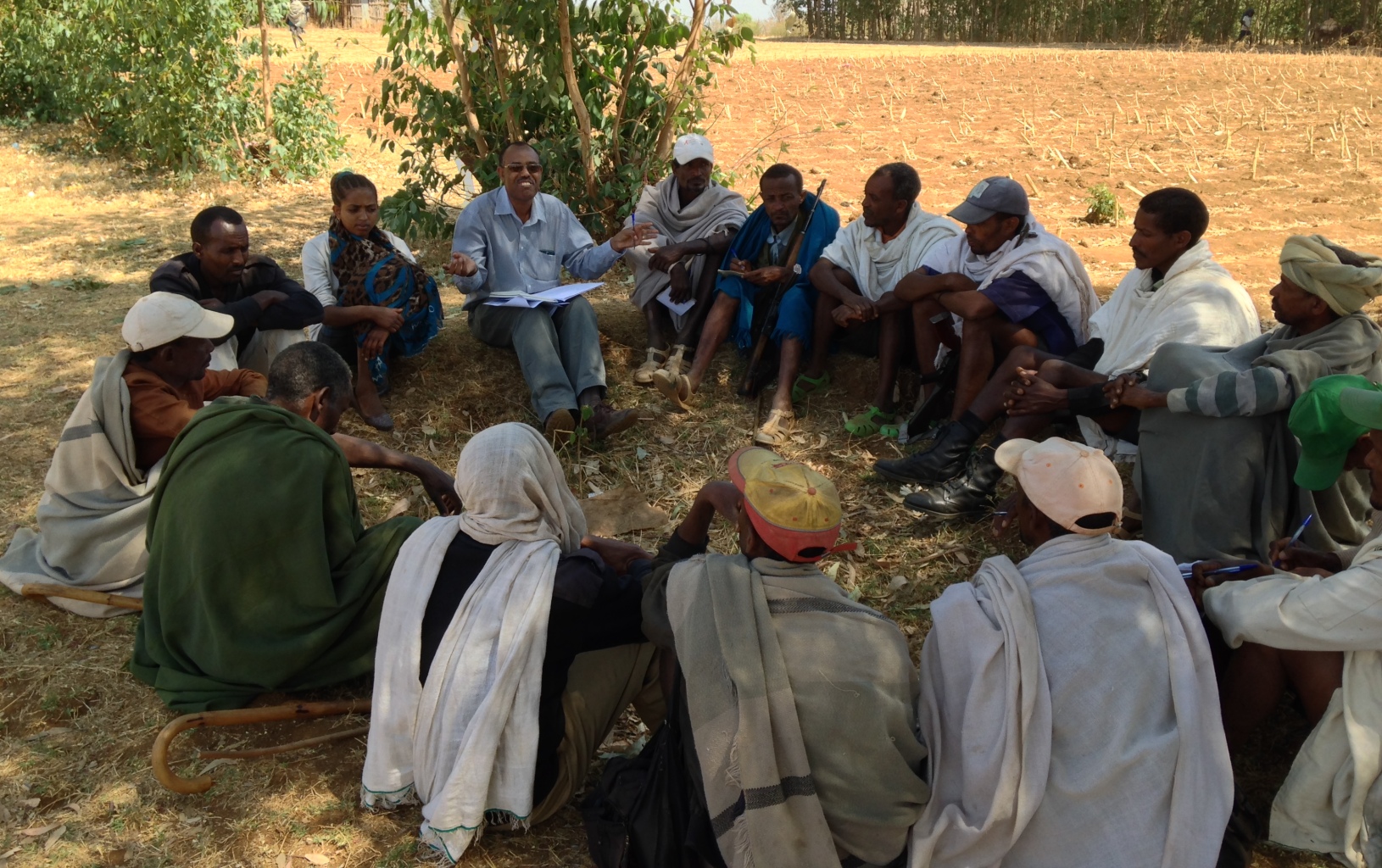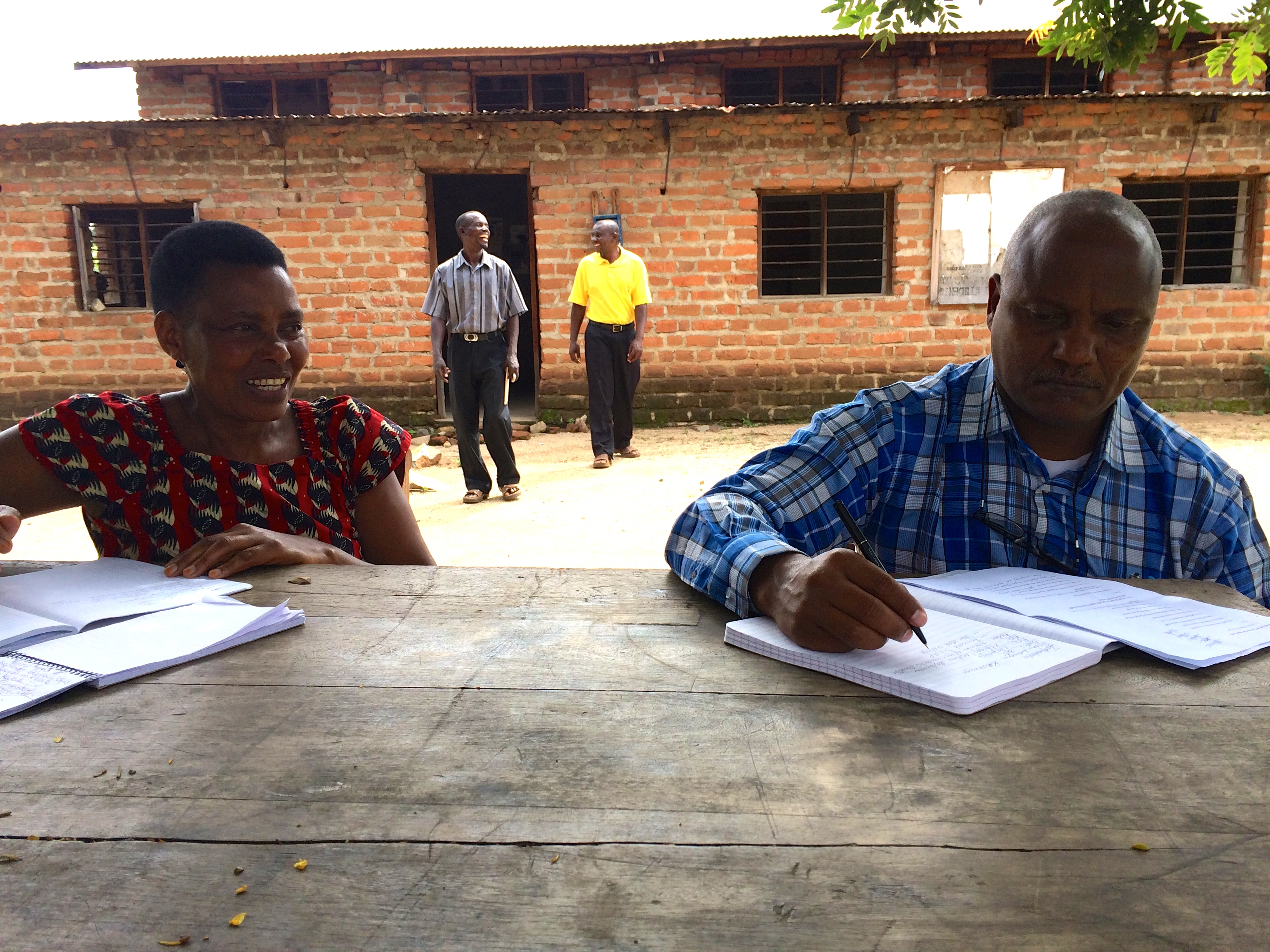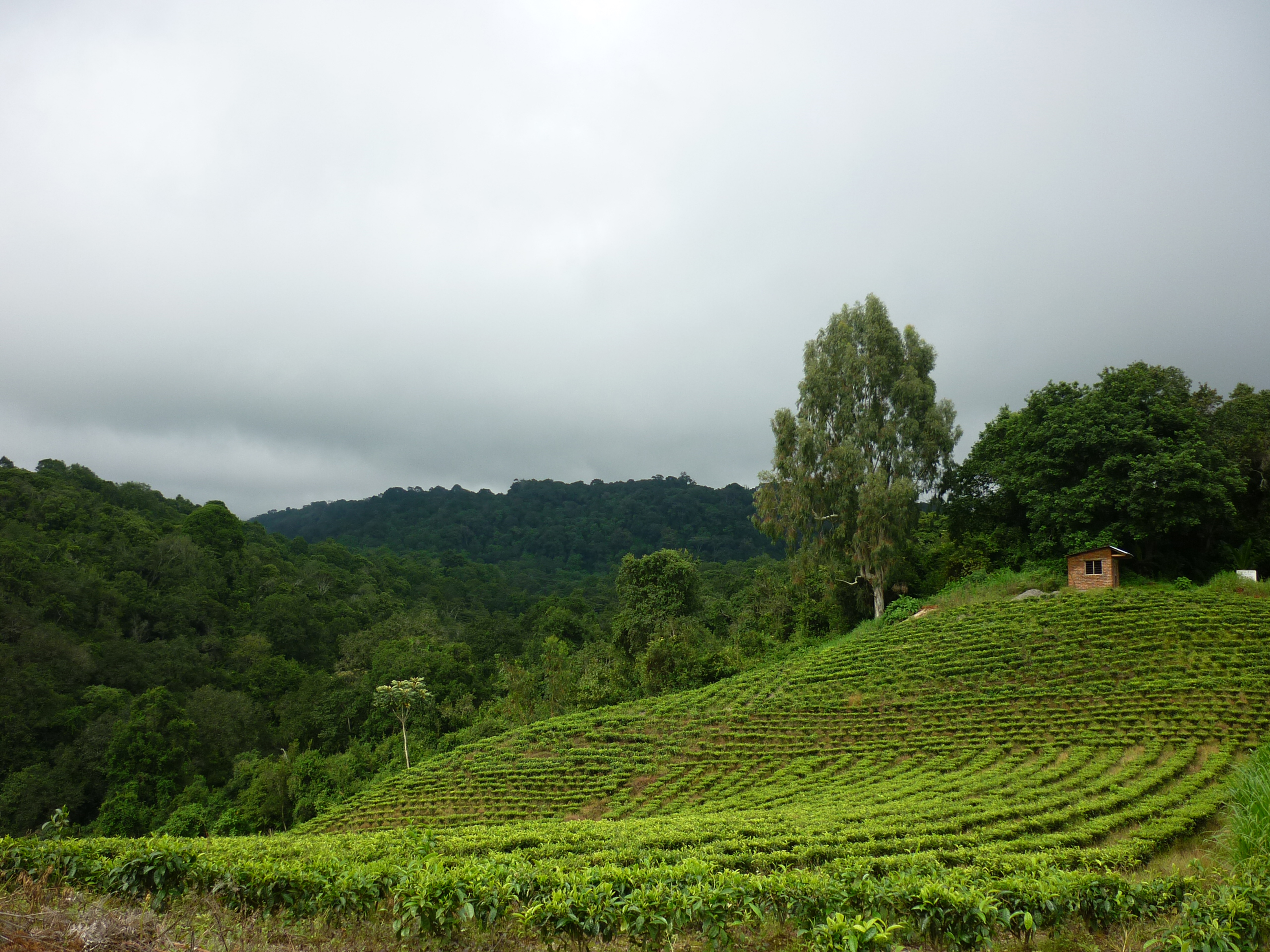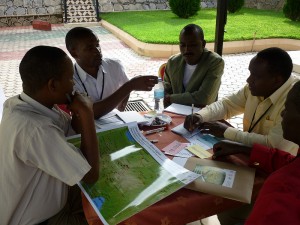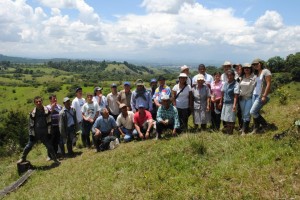Projects
Building an East Africa learning landscapes network with the Landscapes for People, Food and Nature Initiative
Since 2012, the CEWG has been working with the Landscapes for People, Food and Nature (LPFN) Initiative to improve the knowledge and practice of integrated landscape management. An integral part of the initiative has been engaging with landscape leaders on the ground. In East Africa, in particular, the LPFN has brought together leaders from more than 10 landscapes in Kenya, Tanzania and Ethiopia in national and regional level events to exchange knowledge, learning about new tools, and strengthen multi-stakeholder platforms in their landscapes. A Regional Learning Landscapes Knowledge Exchange will build on previous online knowledge exchange events to bring together representatives from each of the learning landscapes in workshop in Nairobi in June 2015. Our hope is to work with the LPFN to foster the establishment of similar networks in Central and South America in the coming year.
To learn more about the emerging national network of learning landscapes, read this blog post. Stay tuned for an update on the June workshop!
Developing a Monitoring and Evaluation (M & E) curriculum for Sustainable Land Management (SLM)
Monitoring and evaluation often can be the first piece of a program to be swept under the rug. It can be time consuming and expensive, and some organizations may not have the skills or capacity to implement a complex monitoring protocol. The CEWG has been working for many years to develop an M&E system that works for landscape leaders. In other words, an approach to M&E that is affordable and can be down with the time and skills that leaders in any landscape are likely to have or be able to develop with minimal training. Although the CEWG has long provided materials for M&E on the Landscape Measures portal, we had yet to develop a complete curriculum for landscape leaders. This project, generously supported by TerrAfrica, gave us the opportunity to do just that. CEWG Director, Louise Buck, along with colleagues from EcoAgriculture Partners, led the development of a complete curriculum for M&E in the context of sustainable land management (SLM) in Africa. This curriculum is especially designed for landscape leaders in East Africa who are interested in implementing collaborative M&E. Along with the curriculum, we developed training guides for a set of tools that can enhance M&E: Ground-based Photo Monitoring and Spatial Planning. A special thanks to CEWG member, Jim Lassoie, and former student, Lindsay Myron, for leading the development of the Ground-Based Photo Monitoring Guide and pilot testing the tool in Ethiopia!
You can read through the curriculum document here. If you are interested in the tools, feel free to follow these links to check out the Ground-Based Photo Monitoring Guide and Spatial Planning Guide.
Potential for village land use planning to support farmer investment in integrated management
Land tenure is considered one of the most important factors in land management. How willing farmers and other land owners are to invest in improving the quality of their land depends on whether or not they believe they will see a return on their investment. Following on the Ecoagriculture Working Group’s work earlier in 2014 to explore the opportunities for developing a landscape label in Mbeya, we returned to work with our partners in Mbeya. The goal for this project was to understand the role that Tanzania’s commitment to conduct village land use planning has on land tenure security and, therefore, on farmers willingness to invest in practices to support more integrated landscape management. Our study focused on Mbarali District in Mbeya Region. We found that the government still has a long way to go before all villages have land use plans in place and these plans are being followed by villages. This work was led by CEWG member, Abigail Hart, along with colleagues from Agricultural Research Institute in Uyole, Tanzania Agriculture Partnership and the University of Dar es Salaam. The work was supported by the International Land Coalition under a grant to support farmer-centered approaches to governance.
To read more about what we learned, check out the full report and policy brief. You can also find a summary of the project in this blog post.
Testing a new market mechanism to support integrated landscape management: Landscape labeling
One facet of the CEWG’s work is to explore innovative market mechanisms to support integrated landscape management. Inspired by certification programs, several of our partners have become interested in developing a landscape-scale standard for production. We call it a “landscape label.” While interest in developing landscape-level standards for agricultural production is growing, our work is some of the first to engage producers in at the landscape level in developing their own standard for a landscape label and putting it to the test. As you’ll see from the report, establishing a landscape label is a lot of work and presents many challenges. However, partners in Lari landscape, in Kenya, and Mbeya landscape, in Tanzania, are continuing to test and refine this approach to marketing their products.
To learn more about our approach to developing a landscape label, read the full report here, as well as the case study that documents the experiences of our partners in Mbeya. You can also find summary of the project in this blog post.
Exploring opportunities for green growth in Mbeya, Tanzania
The Ecoagriculture Working Group, in partnership with EcoAgriculture Partners and the Environmental Resource Management Center for Sustainable Development (ERMCSD) has been working with agricultural leaders, conservation and development practitioners, business owners and policy-makers to identify agricultural innovations that can improve local livelihood opportunities while conserving biodiversity. An initial workshop in March, 2013 used spatial planning to target areas for advancing green growth innovations such as SRI and landscape labelling. This workshop is being followed by a second workshop at the end of September, 2013 to design a process for pilot testing a landscape labelling approach as a new market mechanism for rewarding farmers for conserving biodiversity.
A blog post on the first workshop is available here and the workshop report can be found here.
A framework for ecosystem services and resilience (ESSR)
Why focus on ecosystem services in rural communities?
Agricultural development has progressed in leaps and bounds to feed the global population, but not without environmental and production costs. These environmental costs have limited the ecosystem services on which we depend, including agricultural production as well as access to clean water, protection from natural disasters and fertile soils. An ecosystem service-based approach reconsiders these decisions and aims to move beyond agriculture that ‘does no harm’, to an integrated approach that boosts agricultural production concurrently with other benefits such as soil and water quality, biological conservation, and increased resilience of rural communities. The principles of the framework act as a guide for ecosystem service-based approaches to development interventions. Louise Willemen, member of the Ecoagriculture Working Group and the ESSR team presented co-led a session on the framework at the Ecosystem Service Partnership conference in Bali, Indonesia, in August, 2014.
To read more about the framework, read the full post on the Landscapes for People, Food and Nature Blog.
Continental reviews of integrated landscape initiatives in Africa, Latin America and Asia
This series of continental reviews aims to establish a broad base of knowledge of integrated landscape initiative (ILIs), complex initiatives founded on multiple objectives and multi-stakeholder collaboration. The study aims to answer a set of questions on the context and characteristics of ILIs, the challenges they address, the activities they invest in, the stakeholder groups and sectors that participate in them and the outcomes they are achieving related to production, conservation, livelihoods and institutional planning and coordination. Each continental review involves two phases of research. The first includes analysis of surveys conducted with leaders of ILIs in each of the three continents. The second phase is based on in-depth interviews conducted with multiple stakeholders from subset of the initiatives surveyed in the first phase.
A summary of the continental review of Africa is available here. You can listen to our on-demand webinar for the first phase of the Africa Review here, or read our article on the first phase of the Africa review here.
Developing a framework for “Agriculture Green Growth” in the Southern Agricultural Growth Corridor of Tanzania
The framework for Agriculture Green Growth (AGG) is the outcome of a year-long collaborative research and learning process by the Ecoagriculture Working Group, EcoAgriculture Partners, the SAGCOT Centre and dozens of leaders and innovators in the Corridor who participated in field visits, interviews and the Agriculture Green Growth Leaders Workshop. The process was the first to bring together leaders at local and national levels and across the priority Clusters in the Corridor to reveal opportunities for investment and discuss what needs to happen to facilitate agricultural development that is supported by public, private and civic sector investment partners. The framework is designed to inform investors and other key stakeholders about the development context in the Corridor, and AGG investment innovations and opportunities that complement the goals laid out in the SAGCOT Blueprint, developed by the SAGCOT Centre in 2011. It presents the benefits and impacts of AGG innovations on the ground, the institutional and policy environment needed to create fertile ground for AGG to take root, the types of finance and investment strategies for promoting AGG, a scenario analysis of the potential impacts of AGG in the Corridor, and concrete next steps for advancing AGG.
The framework is comprised of a series of five documents, all of which are available on the Agriculture Green Growth Portal.
Papers
Landscape Collaboration for Regenerative Food Systems
Agroforestry for Sustainable Landscape Management
Using integrated landscape management to scale agroforestry:
examples from Ecuador
Understanding Ecoagriculture: A Framework for Measuring Landscape Performance
 Toward viable landscape governance systems: What works?
Toward viable landscape governance systems: What works?
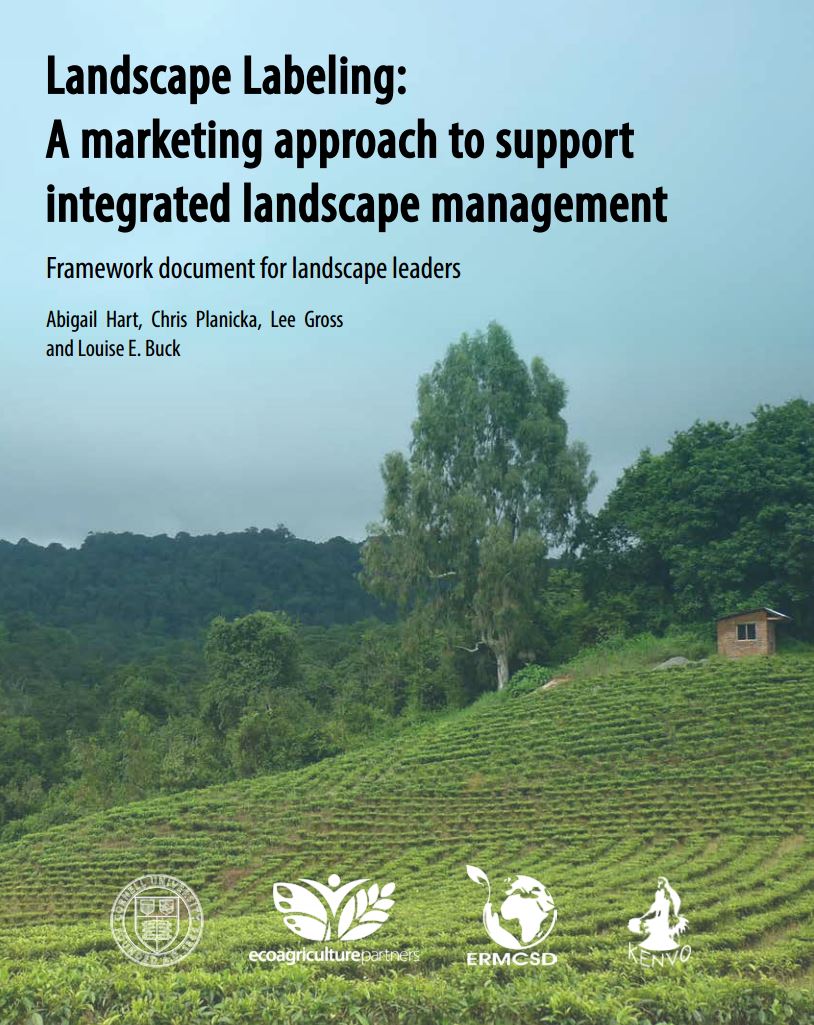 Landscape Labeling: A marketing approach to support integrated landscape management
Landscape Labeling: A marketing approach to support integrated landscape management
 Pilot Testing a Landscape Labeling Approach to Marketing in Mbeya, Tanzania: Case study
Pilot Testing a Landscape Labeling Approach to Marketing in Mbeya, Tanzania: Case study
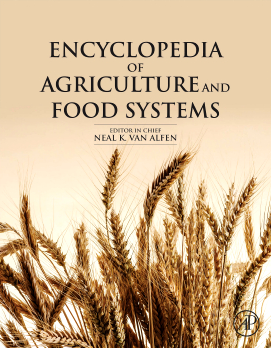 Ecoagriculture: Integrated landscape management for people, food and nature
Ecoagriculture: Integrated landscape management for people, food and nature
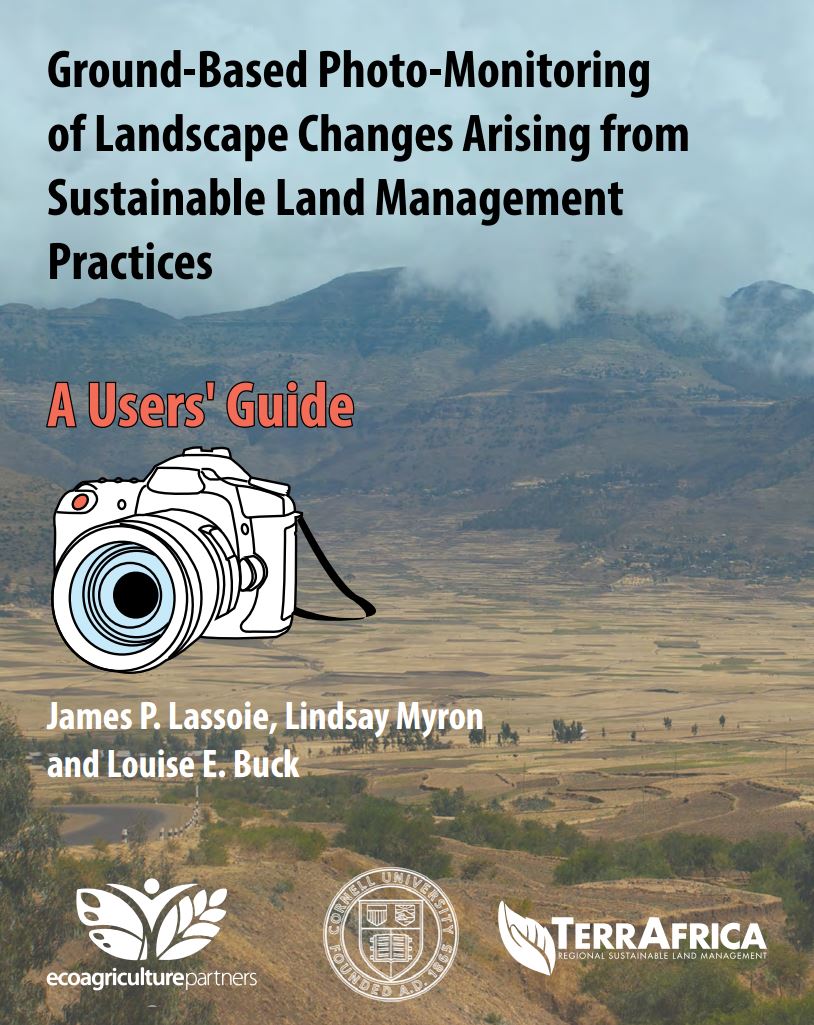 Ground-Based Photo-Monitoring of Landscape Changes Arising from Sustainable Land Management Practices
Ground-Based Photo-Monitoring of Landscape Changes Arising from Sustainable Land Management Practices
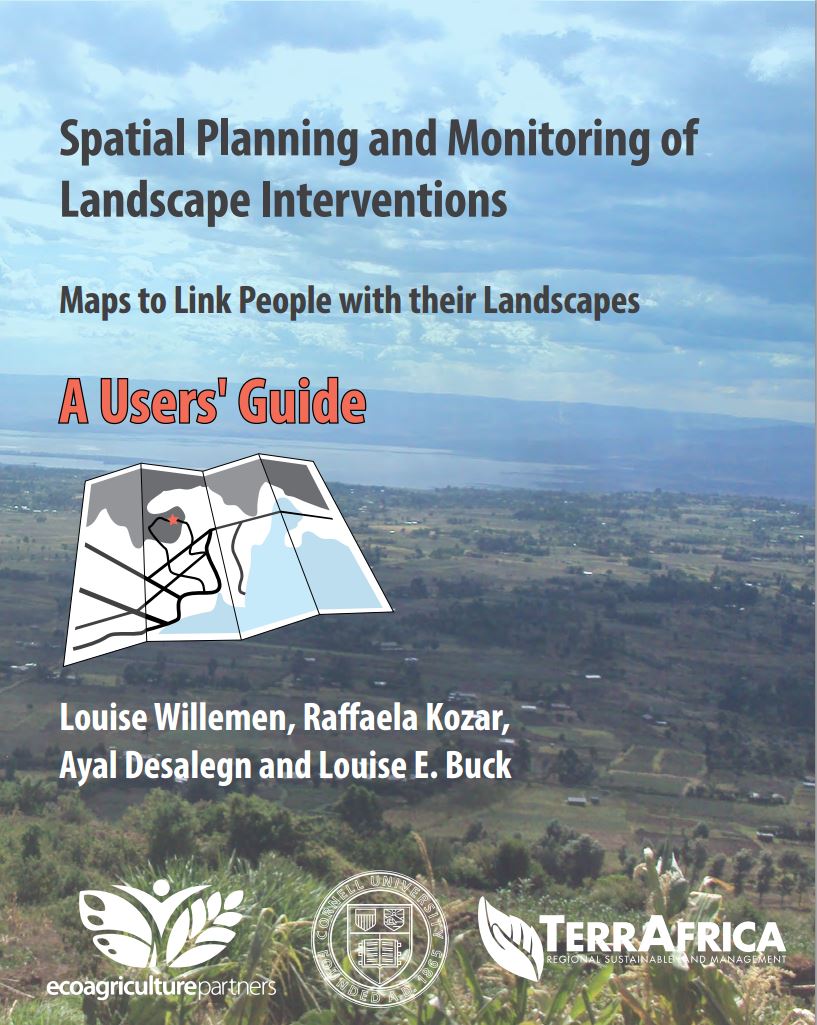 Spatial Planning and Monitoring of Landscape Interventions: Maps to Link People with their Landscapes
Spatial Planning and Monitoring of Landscape Interventions: Maps to Link People with their Landscapes
 Participatory Land Use Planning to Support Tanzanian Farmer and Pastoralist Investment Experiences from Mbarali District, Mbeya Region, Tanzania
Participatory Land Use Planning to Support Tanzanian Farmer and Pastoralist Investment Experiences from Mbarali District, Mbeya Region, Tanzania
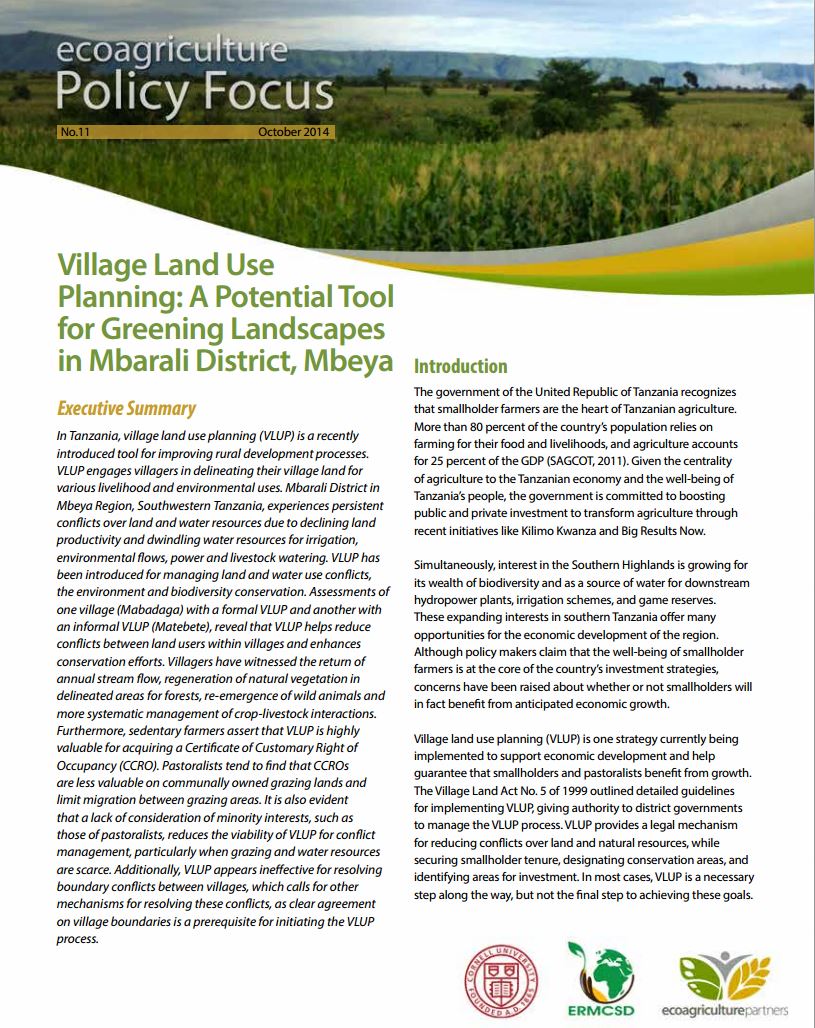 Village Land Use
Village Land Use
Planning: A Potential Tool for Greening Landscapes in Mbarali District, Mbeya
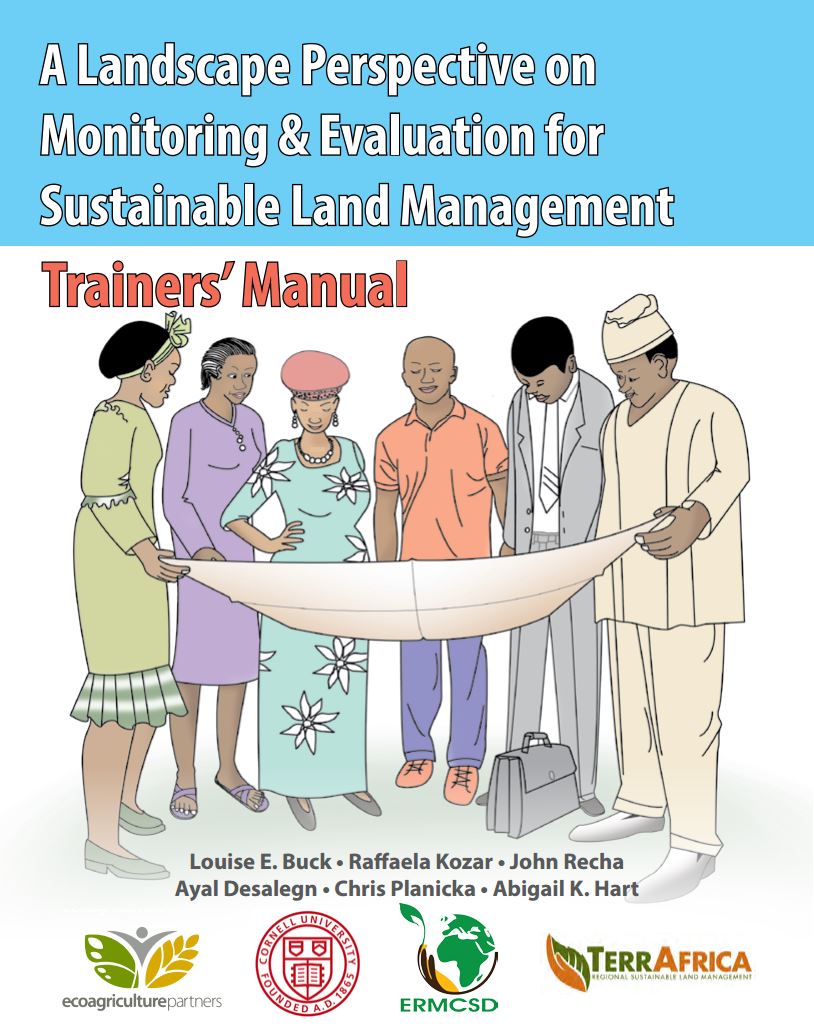 A Landscape Perspective on
A Landscape Perspective on
Monitoring & Evaluation for Land Management: Trainers’ Manual
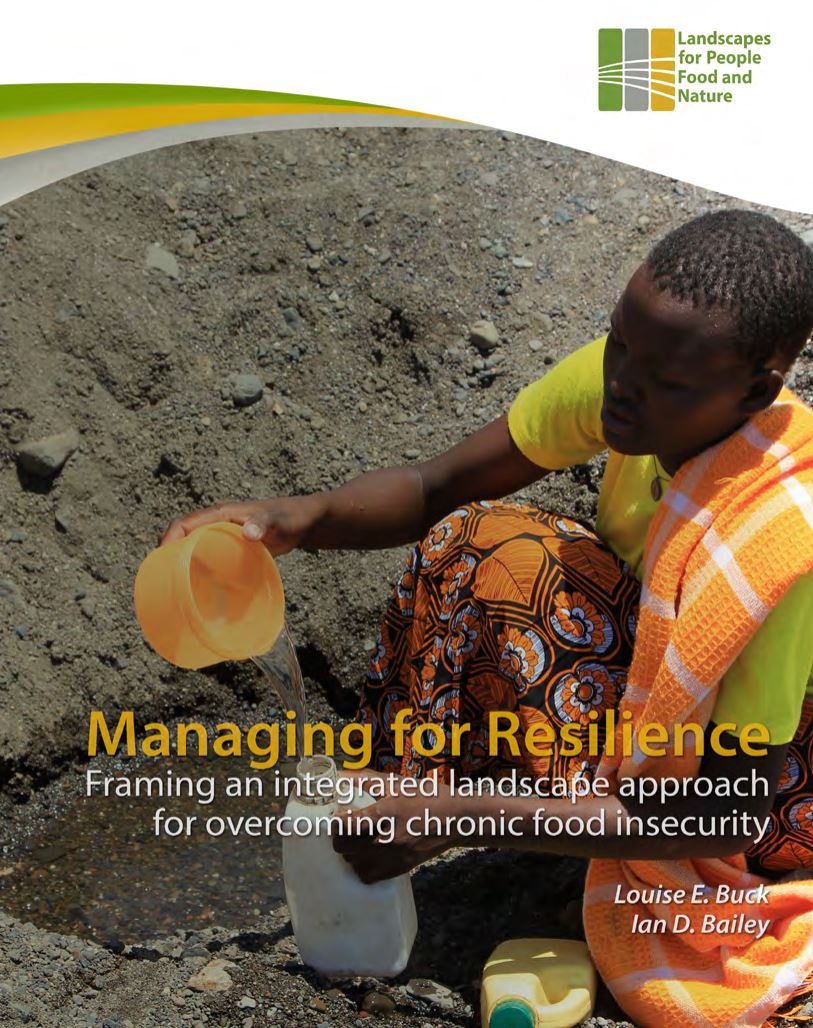 Managing for Resilience: Framing an integrated landscape approach for overcoming chronic food insecurity
Managing for Resilience: Framing an integrated landscape approach for overcoming chronic food insecurity
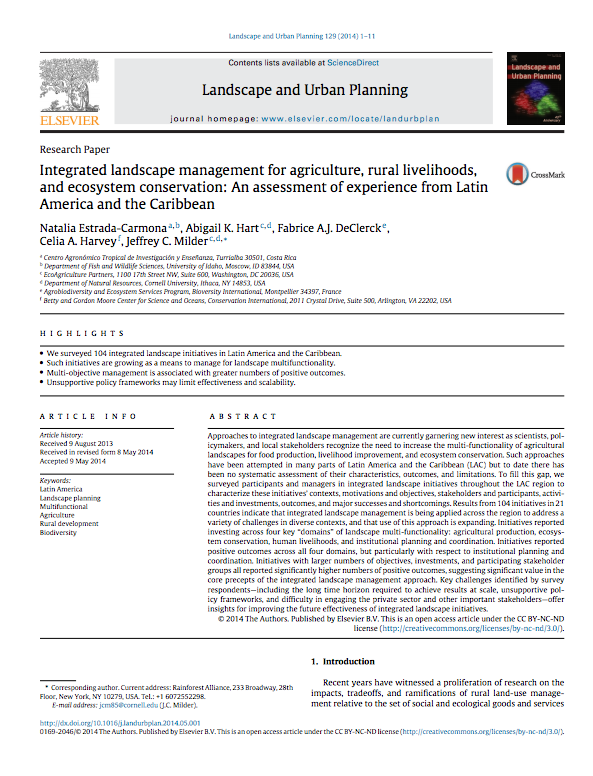 Integrated landscape management for agriculture, rural livelihoods, and ecosystem conservation: An assessment of experience from Latin America and the Caribbean
Integrated landscape management for agriculture, rural livelihoods, and ecosystem conservation: An assessment of experience from Latin America and the Caribbean
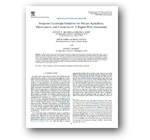 Integrated landscape initiatives for African agriculture, development, and conservation: A region-wide assessment
Integrated landscape initiatives for African agriculture, development, and conservation: A region-wide assessment
 Ten principles for a landscape approach to reconciling agriculture, conservation and other competing land uses
Ten principles for a landscape approach to reconciling agriculture, conservation and other competing land uses
 Taking tree-based ecosystem approaches to scale: Evidence of drivers and impacts on food security, climate change resilience and carbon sequestration
Taking tree-based ecosystem approaches to scale: Evidence of drivers and impacts on food security, climate change resilience and carbon sequestration
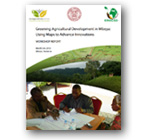 Greening agricultural development in Mbeya: Using maps to advance innovations
Greening agricultural development in Mbeya: Using maps to advance innovations

